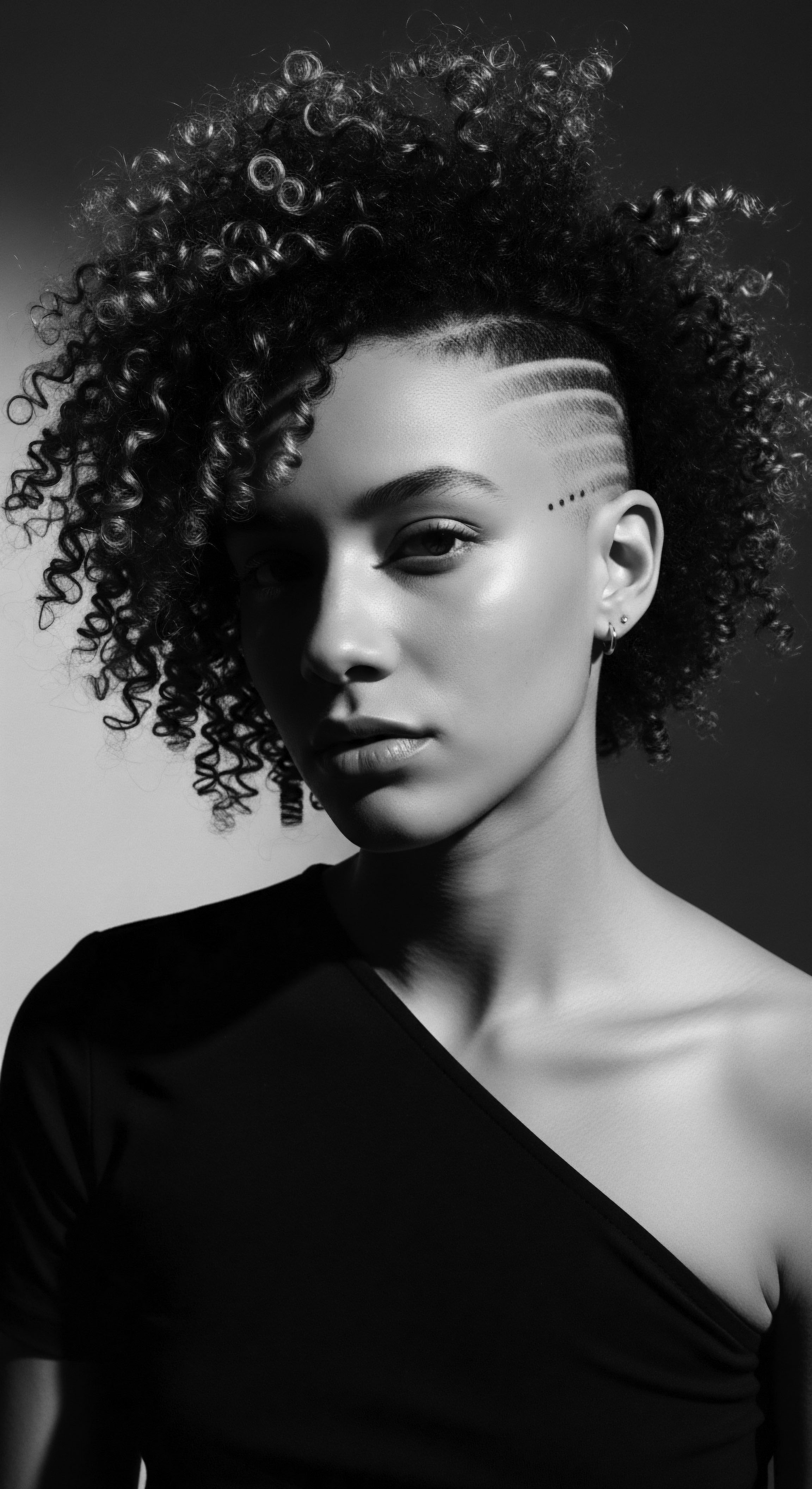
Fundamentals
The very concept of Hair Cultural Identity reaches far beyond mere aesthetics; it represents a profound, interwoven narrative of self, community, and lineage, particularly potent within the expansive realm of textured hair. It is not a superficial adornment but a living chronicle, a physical manifestation of heritage passed down through generations. This deep connection transforms strands into storytellers, each coil and curl holding echoes of ancestral practices, collective struggles, and enduring celebrations.
The hair upon one’s head, especially when textured, acts as a vibrant marker, a visible declaration of belonging to a specific cultural tapestry. Its significance, therefore, extends into the very core of individual and communal self-perception.
For countless communities, especially those with rich histories of textured hair, the designation of Hair Cultural Identity speaks to how hair is inextricably linked to one’s origins and societal standing. It encompasses the collective customs, beliefs, and rituals associated with hair, shaping its meaning within a given group. From the intricate braiding patterns that once conveyed social status or marital availability in ancient African societies to the symbolic acts of hair covering in various spiritual traditions, hair has always held a special place. This identity is a testament to the resilience of cultural practices, many of which survived centuries of displacement and oppression, finding new forms and meanings in diasporic lands.
Understanding the Hair Cultural Identity begins with recognizing hair as more than just biological filament. It is a canvas for cultural expression, a repository of ancestral wisdom, and a powerful instrument of personal and collective affirmation. The meaning of hair is not static; it shifts and evolves across time and geography, yet its foundational connection to cultural roots persists.
Hair Cultural Identity is a living testament to heritage, deeply intertwined with the ancestral stories and collective experiences of textured hair communities.
Within this foundational exploration, we recognize that the Hair Cultural Identity for those with textured hair is a vibrant dialogue between past and present. It honors the ingenuity of traditional care methods, often rooted in the land and its bounties, and acknowledges the historical contexts that shaped these practices. The act of caring for textured hair, whether through ancient oiling rituals or modern styling techniques, often carries the weight of generations, becoming a silent conversation with those who came before.
- Ancestral Echoes ❉ The initial understanding of Hair Cultural Identity begins with acknowledging the deep historical roots of hair practices within specific cultural groups, particularly those with textured hair.
- Communal Bonds ❉ Hair often serves as a unifying element, fostering a sense of shared experience and collective identity among individuals within a cultural community.
- Personal Affirmation ❉ The way one wears and cares for their hair becomes a personal statement, affirming their connection to their heritage and expressing their unique identity.
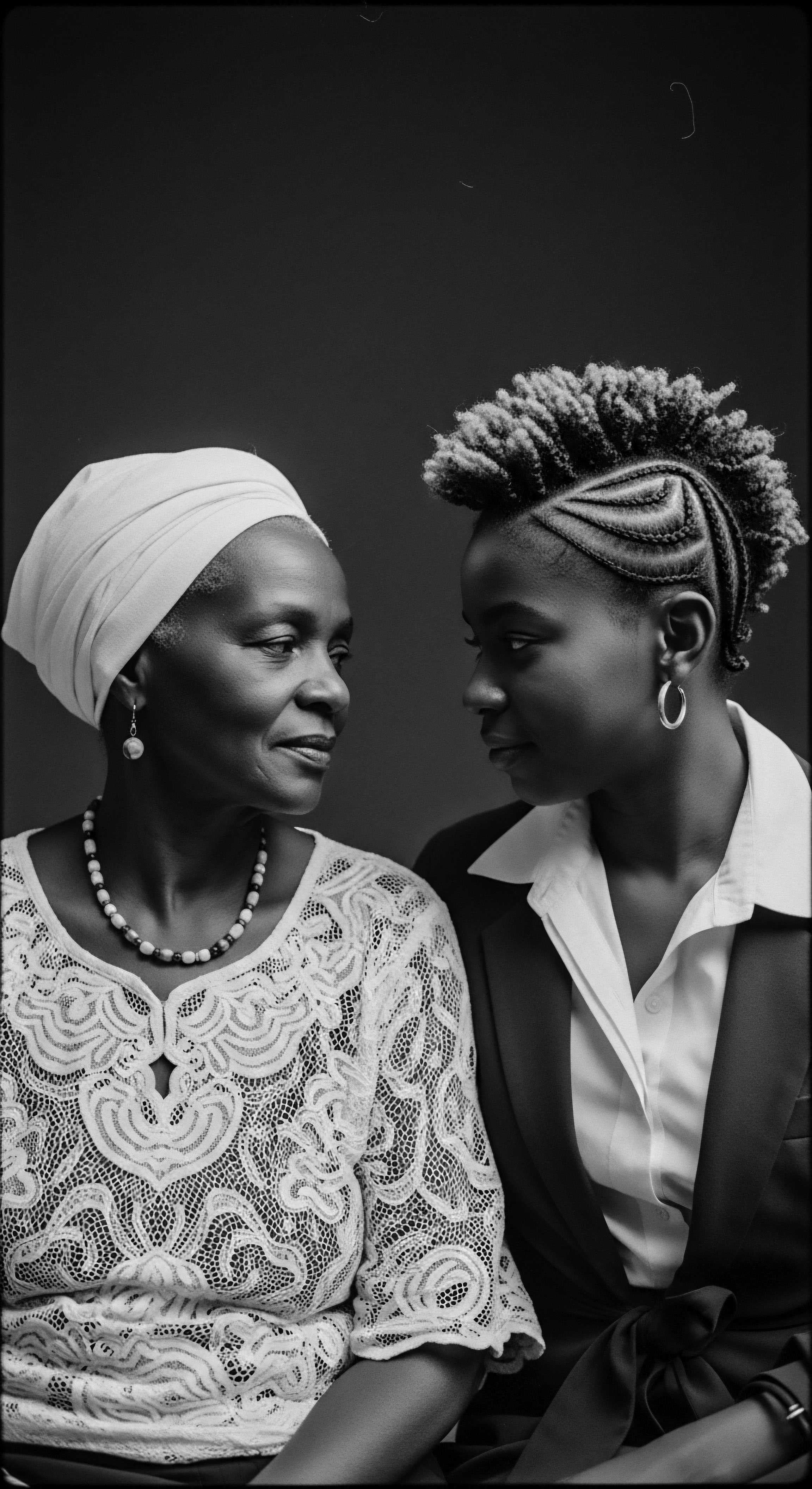
Intermediate
Moving beyond a rudimentary understanding, the Hair Cultural Identity, particularly for those whose strands coil and ripple with natural texture, manifests as a dynamic interplay of historical memory, social commentary, and personal agency. It is a nuanced interpretation, acknowledging that while hair is a biological outgrowth, its cultural meaning is constructed through centuries of lived experience. This deeper comprehension requires us to examine the layers of significance hair has accumulated, especially within Black and mixed-race communities, where hair has frequently been a battleground for self-definition and a beacon of resistance against imposed beauty standards. The historical trajectory of textured hair, from revered symbol in ancestral lands to object of subjugation during colonial eras, and then to a powerful emblem of pride in contemporary movements, paints a vivid picture of its profound cultural import.
The Hair Cultural Identity is not merely a set of historical facts; it is a continuously evolving narrative, a testament to the adaptive spirit of human communities. Consider the widespread adoption of specific hair adornments or styles, like beads, cowrie shells, or specific parting techniques, across diverse African ethnic groups. These were not arbitrary choices; they were designations that communicated complex social codes, spiritual beliefs, and even tribal affiliations.
The significance of these practices, often carried across the Atlantic through the brutal transatlantic slave trade, persisted in clandestine forms, becoming silent acts of cultural preservation. The interpretation of hair, therefore, becomes a lens through which we can perceive the ongoing dialogue between inherited traditions and contemporary expressions.
For individuals with textured hair, this identity often involves a conscious connection to practices passed down through families or rediscovered through collective cultural awakening. The act of washing, conditioning, or styling becomes a ritual, often imbued with a sense of connection to forebears. The meaning derived from these actions is not solely about hair health; it is equally about honoring a lineage of care and resilience. This explication of Hair Cultural Identity acknowledges the deep emotional and psychological resonance hair holds, serving as a powerful conduit for self-acceptance and a rejection of Eurocentric beauty norms that historically marginalized textured hair.
The Hair Cultural Identity for textured hair communities is a dynamic narrative of historical resilience, social defiance, and deeply personal affirmation.
The ongoing natural hair movement, for example, is a contemporary expression of this Hair Cultural Identity. It represents a collective decision to reject chemical relaxers and heat styling in favor of embracing one’s inherent hair texture. This movement, while modern in its manifestation, draws deeply from the wellspring of ancestral wisdom, advocating for natural ingredients and gentle care practices that mirror those used by previous generations.
It is a powerful affirmation of Black identity and a reclamation of self-worth tied directly to one’s natural crown. The Hair Cultural Identity thus becomes a bridge, connecting the historical practices of hair care to the modern pursuit of holistic well-being and cultural authenticity.
The practical application of understanding this identity manifests in several ways:
- Informed Product Choices ❉ A deeper comprehension guides individuals toward products that respect and nourish textured hair, often favoring natural ingredients historically utilized in ancestral care rituals.
- Reclamation of Traditional Styles ❉ Many individuals actively seek out and revive traditional braiding, twisting, and coiling techniques, honoring their historical significance and aesthetic beauty.
- Community Building ❉ Shared experiences around textured hair care and styling foster strong bonds within communities, creating spaces for mutual support, education, and celebration of Hair Cultural Identity.
This intermediate examination of Hair Cultural Identity invites us to look beyond the surface, to discern the intricate threads of history, resistance, and self-love that are woven into every strand of textured hair. It compels us to see hair not just as a part of the body, but as a living symbol of a rich and enduring heritage.
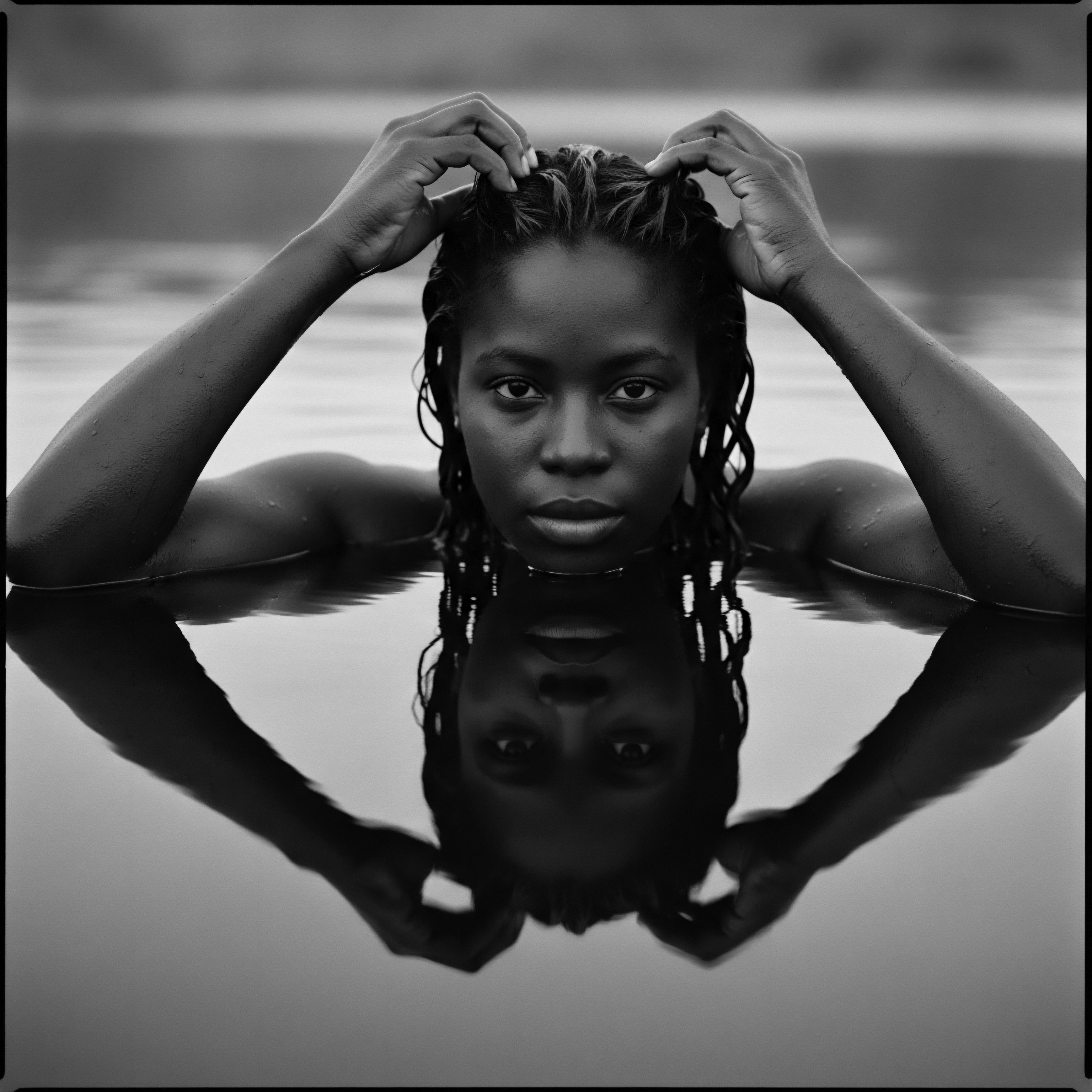
Academic
The Hair Cultural Identity, viewed through an academic lens, constitutes a complex socio-cultural construct, a delineation of the profound symbiotic relationship between an individual’s hair morphology, particularly its textured expressions, and the collective cultural narratives, historical trajectories, and socio-political dynamics of their community. It is an intricate specification that transcends biological classification, positing hair as a potent semiotic system, a non-verbal communicator of group affiliation, individual agency, and inherited legacy. This interpretation acknowledges that while hair is fundamentally a biological fiber, its cultural meaning is a product of iterative social conditioning, historical events, and communal interpretations, rendering it a powerful site for the negotiation of identity, power, and resistance, particularly within diasporic populations with rich textured hair heritages.
The elucidation of Hair Cultural Identity demands a multidisciplinary approach, drawing from anthropology, sociology, ethnobotany, psychology, and critical race theory. It necessitates an examination of how specific hair types, especially those with tighter curls, coils, and kinks, have been historically racialized, politicized, and aestheticized within varying societal frameworks. The significance of textured hair, for instance, in pre-colonial African societies was often tied to spiritual beliefs, social hierarchies, and familial lineages.
Hair was meticulously styled, adorned, and cared for, reflecting a holistic approach to well-being that integrated physical appearance with spiritual and communal harmony. These ancestral practices, often employing natural ingredients derived from the immediate environment, represent an enduring legacy of ecological knowledge and self-sustenance.
A critical historical example that profoundly illuminates the Hair Cultural Identity’s connection to textured hair heritage and Black experiences is the ingenious use of Hair Braiding as a Covert Communication System and Survival Tool during the Transatlantic Slave Trade. Stripped of their languages, families, and cultural artifacts, enslaved Africans ingeniously adapted their hair practices to transmit vital information and preserve cultural memory. Intricate cornrow patterns, for instance, were not merely decorative; they functioned as topographical maps, indicating escape routes through plantations and forests, guiding individuals towards freedom. Within these braids, rice seeds or gold dust were sometimes hidden, providing sustenance or a means of exchange upon escape (Byrd & Tharps, 2001).
This historical instance underscores the Hair Cultural Identity as an active, subversive force, transforming a seemingly benign bodily feature into a conduit for resistance, a repository of ancestral knowledge, and a tangible link to a stolen heritage. The hair, in this context, became a living archive, its patterns embodying a collective memory of resilience and a silent testament to the enduring spirit of a people.
Hair Cultural Identity, in academic discourse, represents a complex socio-cultural construct where textured hair becomes a potent semiotic system for identity, power, and historical resistance.
The profound impact of this historical period reverberates through contemporary understandings of Hair Cultural Identity. The systemic devaluation of textured hair, perpetuated through discriminatory policies and societal biases, has necessitated ongoing movements for hair liberation, such as the CROWN Act in the United States. This legislative effort aims to prohibit discrimination based on hair texture and protective hairstyles, recognizing that such discrimination disproportionately affects Black individuals and is a direct descendant of historical prejudices. The ongoing struggle for acceptance of natural textured hair highlights that the Hair Cultural Identity is not a static concept but a dynamic arena where historical injustices intersect with contemporary assertions of self-worth and cultural pride.
The psychological ramifications of Hair Cultural Identity are also significant. Research in social psychology suggests that individuals whose hair is consistently devalued or deemed “unprofessional” may experience heightened levels of stress, anxiety, and diminished self-esteem. Conversely, the reclamation and celebration of one’s natural hair texture, deeply rooted in a positive Hair Cultural Identity, has been correlated with increased psychological well-being and a stronger sense of self-acceptance among Black women (Hope et al.
2015). This demonstrates that the Hair Cultural Identity is not merely an external expression but deeply internal, shaping cognitive and emotional landscapes.
Furthermore, the Hair Cultural Identity also encompasses the ethnobotanical knowledge embedded within traditional hair care practices. The consistent use of specific plants, oils, and butters—such as shea butter, coconut oil, and various herbal infusions—across African and diasporic communities for millennia is not coincidental. These practices were developed through generations of empirical observation and passed down as embodied wisdom.
Modern hair science is increasingly validating the efficacy of these traditional ingredients, often finding scientific explanations for their beneficial properties. This convergence of ancestral wisdom and contemporary scientific understanding offers a compelling case for the enduring value of Hair Cultural Identity, not just as a cultural marker, but as a source of practical knowledge for hair health.
The long-term consequences of a robust Hair Cultural Identity within textured hair communities are multifaceted. It fosters a sense of collective empowerment, strengthens intergenerational bonds through shared rituals, and contributes to the preservation of cultural heritage. When individuals feel affirmed in their natural hair, it translates into broader self-acceptance and a more confident assertion of their cultural identity in all spheres of life.
This collective affirmation has societal implications, contributing to the dismantling of Eurocentric beauty hegemonies and promoting a more inclusive understanding of beauty. The continuous process of rediscovery and reinterpretation of ancestral hair practices ensures that the Hair Cultural Identity remains a vibrant, living entity, adapting to new contexts while retaining its profound historical and cultural resonance.
The exploration of Hair Cultural Identity from an academic perspective thus moves beyond superficial observations, delving into the intricate historical, sociological, psychological, and even botanical dimensions that shape its meaning. It reveals hair as a powerful site of cultural meaning, a testament to resilience, and a vital component of identity formation and expression, particularly for those whose hair carries the rich legacy of textured heritage.
| Aspect of Hair Cultural Identity Hair as Communication |
| Traditional Practice & Heritage Context In pre-colonial West Africa, specific braiding patterns conveyed social status, marital status, or tribal affiliation. During slavery, cornrows served as covert maps for escape routes and hidden repositories for seeds. |
| Contemporary Validation & Significance Modern cultural studies recognize hair as a powerful non-verbal communicator of identity, resistance, and belonging within diasporic communities. |
| Aspect of Hair Cultural Identity Holistic Hair Care |
| Traditional Practice & Heritage Context Ancestral African practices emphasized natural ingredients like shea butter and plant-based oils for scalp health, hair growth, and spiritual cleansing. |
| Contemporary Validation & Significance Contemporary trichology and cosmetic science increasingly validate the moisturizing, protective, and nourishing properties of these traditional ingredients for textured hair. |
| Aspect of Hair Cultural Identity Community Rituals |
| Traditional Practice & Heritage Context Hair styling was often a communal activity, fostering intergenerational bonding and the transmission of cultural knowledge and stories. |
| Contemporary Validation & Significance Modern natural hair meetups and online communities replicate this communal aspect, providing support, education, and celebration of textured hair identities. |
| Aspect of Hair Cultural Identity The enduring wisdom of Hair Cultural Identity, rooted in ancestral practices, continues to shape and inform contemporary approaches to textured hair care and self-expression. |
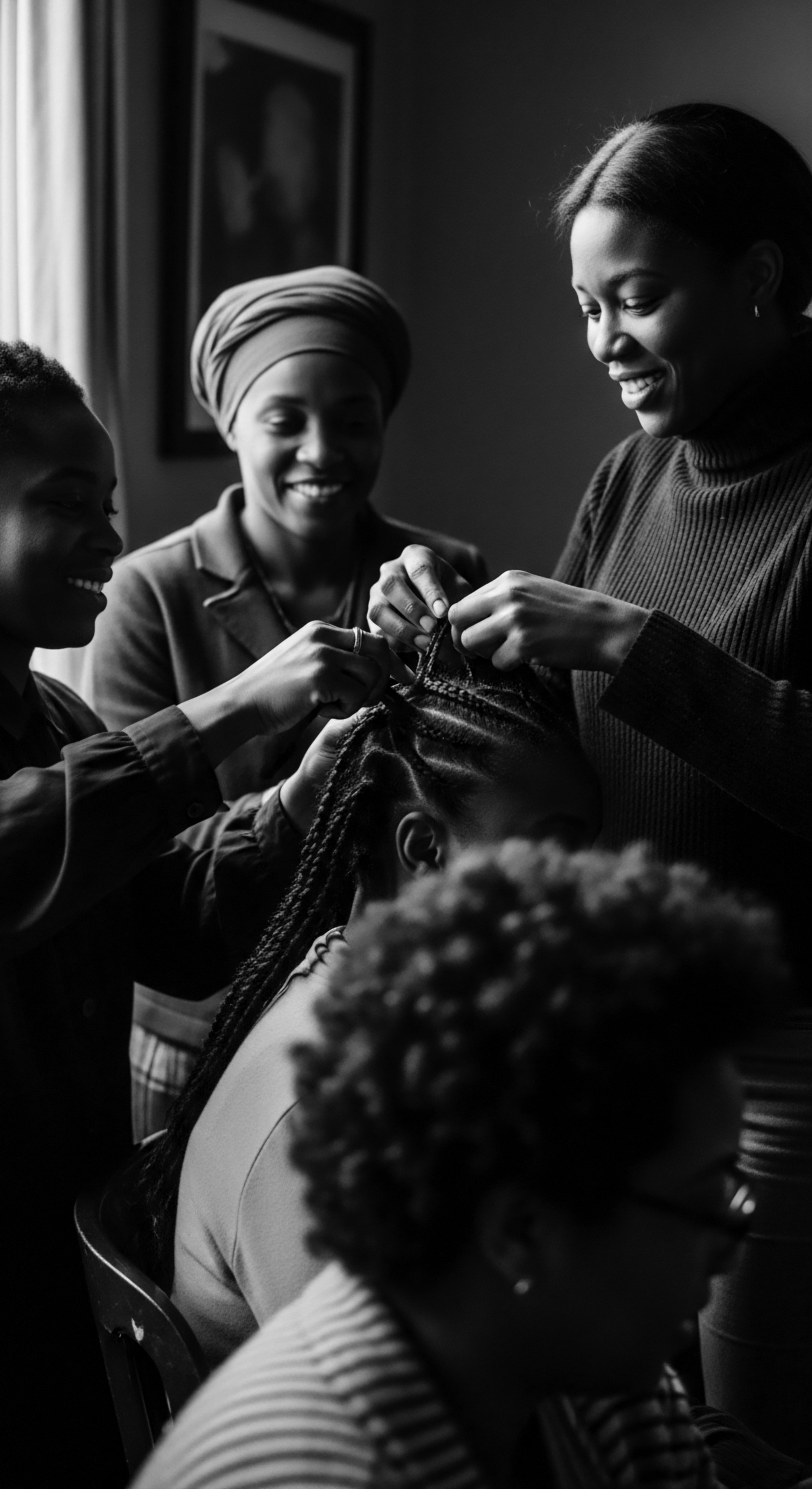
Reflection on the Heritage of Hair Cultural Identity
As we conclude this exploration of Hair Cultural Identity, a profound understanding emerges ❉ the strands that crown us are not merely biological formations; they are living threads of history, wisdom, and enduring spirit. For those blessed with textured hair, this identity is a sacred inheritance, a vibrant connection to ancestral lineages that stretch back through time, across continents, and into the very soil from which ancient remedies were drawn. The ‘Soul of a Strand’ ethos, therefore, finds its deepest resonance here, acknowledging that every curl, every coil, every kink carries the memory of resilience, the melody of communal song, and the quiet strength of those who came before.
The journey of Hair Cultural Identity, from its elemental biological beginnings to its complex social and spiritual meanings, is a testament to the ingenuity and adaptive power of human culture. It reminds us that care for our hair is never a solitary act; it is a continuation of a timeless dialogue, a gentle conversation with the hands that once braided, the voices that once sang, and the hearts that once yearned for freedom and affirmation. The recognition of hair as a cultural artifact, a symbol of resistance, and a source of profound pride, particularly for Black and mixed-race communities, elevates its status beyond the mundane. It transforms a daily ritual into an act of remembrance, a celebration of inherited beauty, and a powerful declaration of self in a world that often seeks to diminish difference.
This heritage, rich and layered, calls upon us to approach our textured hair with reverence, to understand its unique needs not just through scientific principles, but through the lens of ancestral wisdom. It invites us to honor the historical struggles and triumphs associated with textured hair, recognizing that our personal hair journeys are intrinsically linked to a larger, collective narrative. The Hair Cultural Identity is a dynamic, living entity, continually shaped by contemporary experiences yet always rooted in the deep, fertile ground of the past. It serves as a powerful reminder that our hair, in its magnificent diversity, is a tangible link to our origins, a beautiful expression of who we are, and a beacon guiding us toward a future where every strand is celebrated for its inherent beauty and its profound story.
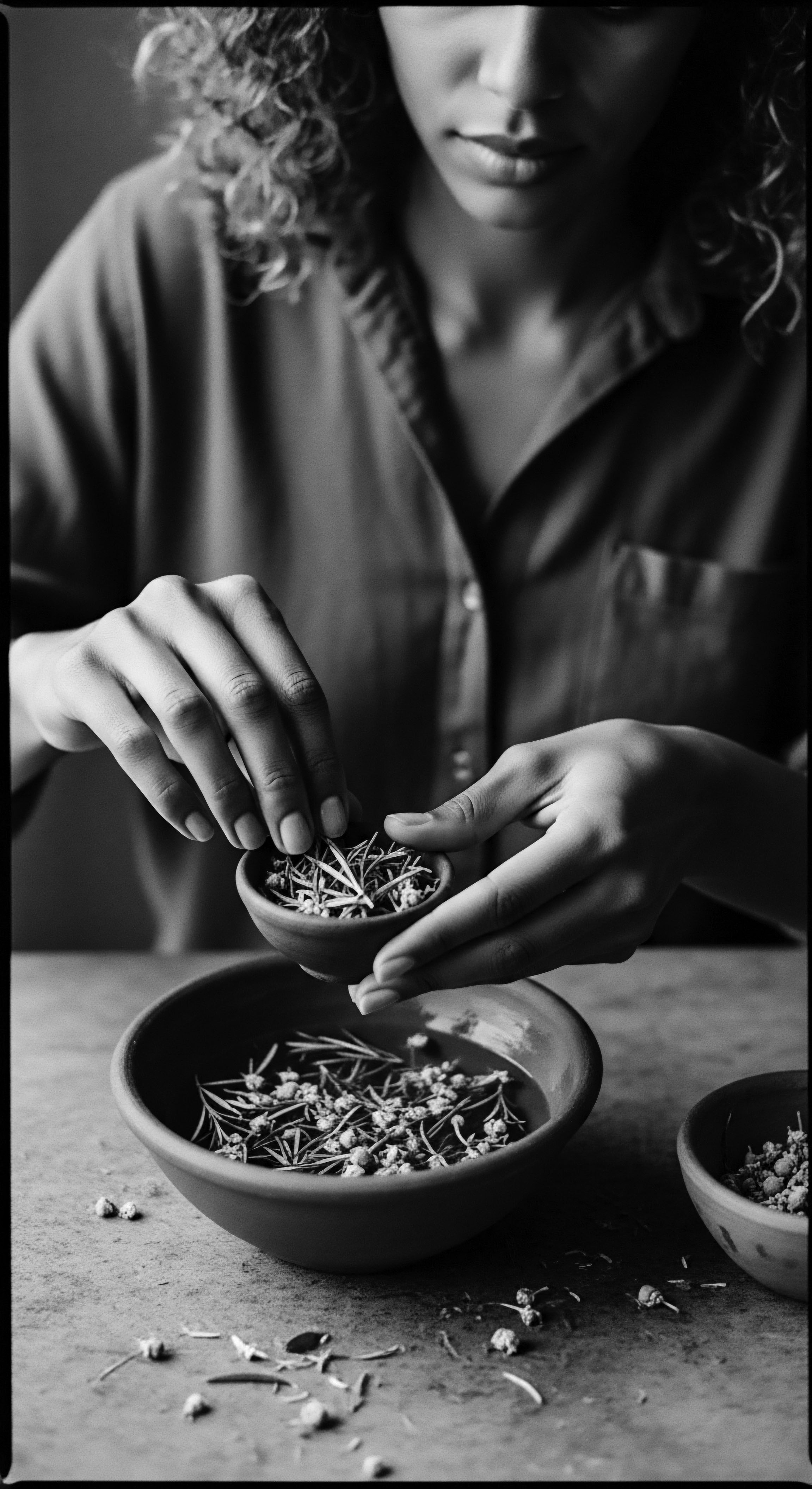
References
- Byrd, A. & Tharps, L. (2001). Hair Story ❉ Untangling the Roots of Black Hair in America. St. Martin’s Press.
- Cox, C. (2015). The Social History of Hair ❉ Culture, Fashion, and Identity. Bloomsbury Academic.
- Hobbs, T. B. (2014). Styling Blackness ❉ The Black Hair Industry and the Politics of Race, Gender, and Beauty. University Press of Florida.
- Hope, E. C. Velez, G. A. & Grzanka, P. R. (2015). “I’m Not My Hair” ❉ Hair Discrimination and the Psychological Well-Being of Black Women. Journal of Counseling Psychology, 62(5), 654-663.
- Mercer, K. (1994). Welcome to the Jungle ❉ New Positions in Black Cultural Studies. Routledge.
- Opoku-Mensah, A. (2017). African Hairitage ❉ The Cultural and Historical Significance of Hair in African Societies. Langaa RPCIG.
- White, D. G. (1999). Ar’n’t I a Woman? ❉ Female Slaves in the Plantation South. W. W. Norton & Company.
